#Optical sensor
Explore tagged Tumblr posts
Text
Security Battle Droid

STAR WARS EPISODE I: The Phantom Menace 02:01:08
#Star Wars#Episode I#The Phantom Menace#Naboo#Theed#Battle of Theed#Battle of Naboo#Theed Royal Palace#Throne Room#unidentified sculpture#unidentified battle droid#OOM security battle droid#E-5 blaster rifle#optical sensor#waste energy conduit#receiver assembly casing#sampled movement cycle memory#electromagnetic joint couplings#arm extension piston
3 notes
·
View notes
Text
Researchers have developed a new optical sensor that provides a simple way to achieve real-time detection of extremely low levels of arsenic in water. The technology could enable household testing for arsenic, empowering individuals to monitor their own water quality. Arsenic contamination is a serious environmental and public health challenge affecting millions of people around the world. This contamination occurs when natural geological processes release arsenic from rocks and soil into groundwater and can be exacerbated by mining, industrial waste disposal and use of arsenic-based pesticides. "Consuming arsenic-contaminated water can lead to severe health conditions including arsenic poisoning and cancers of the skin, lung, kidney and bladder," said lead researcher Sunil Khijwania from the Indian Institute of Technology Guwahati. "By creating a sensor that is sensitive, selective, reusable and cost-effective, we aim to address the need for a reliable and user-friendly tool for routine monitoring, helping to protect communities from the risks of arsenic exposure."
Read more.
#Materials Science#Science#Sensors#Optics#Arsenic#Clean water#Water#Gold#Alumina#Composites#Graphene#Nanotechnology#Fiber optics
17 notes
·
View notes
Text

HE CAME!!!!!!!!
;)
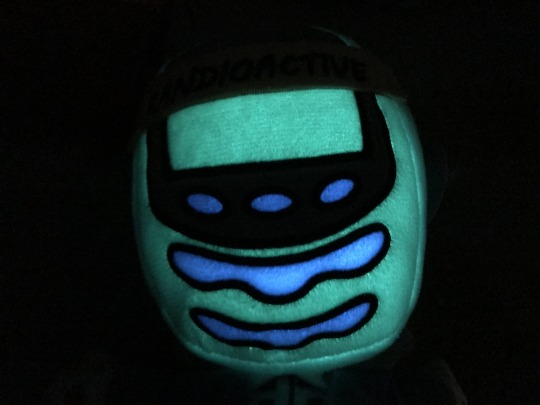
@directdogman
#dialtown#randy jade#im microwaving him#throwing him against the wall#maybe even#against the kitchen floor#glow in the dark is so cool omg#love shining a flashlight directly into his optical sensors ❤️#(im sorry)#it's like an interrogation scene!
123 notes
·
View notes
Text
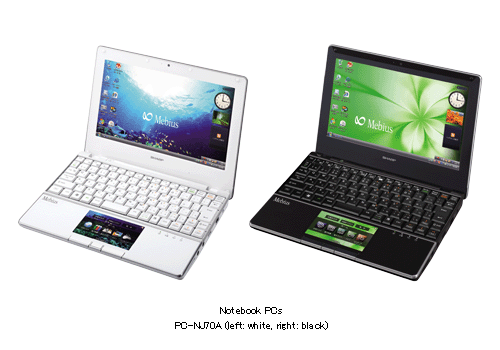
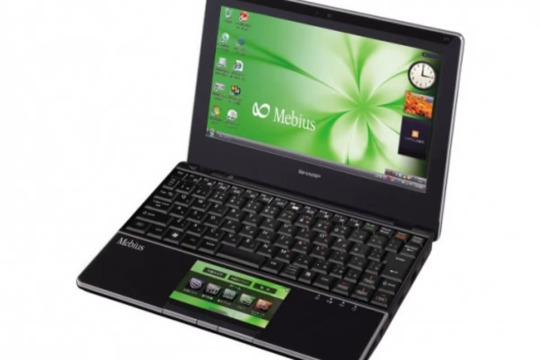

Sharp Releases Notebook PC with Optical Sensor LCD Pad (2009)
#2009#2000s#09#00s#art#black#computer#design#frutiger aero#graphic design#graphics#laptop#pc#photos#sharp optical sensor laptop#sharp#techcore#technology#white
141 notes
·
View notes
Text
nova moment i won’t get to for ages but wanna talk about bc it’s really fucking funny- when amy has her bat mizvah she obviously like. invites her friends. and nova is her best friend and bc of this she’s obviously also invited. and she just spends the entire time in awe bc she's got a special interest in religious text while also having never had any knowledge of actual religious practices. after during celebrations she's just BEGGING amy to know how she can come back to the synagogue bc she had the best night of her life that didn't involve murder she's utterly awestruck. like she legitimately Did Not Know religion was like this and she’s stoked. like down to convert on the spot stoked. (amy encourages her to do more research first bc obviously nova doesn’t have the informed ability to make that choice when she barely knows anything about religion except the scripture isolated from any context but she does take nova to synagogue when she’s in station square)
#please inform me if i said anything incorrect I’m not jewish myself#Obviously I’m doing research into it for this but if I’ve missed something or got it wrong just message me#but yeah. i think nova seeing exactly one (1) religious thing and immediately demanding to convert is very funny#she's genuinely in awe she's fully respecting everything to her best knowledge btw she just thinks judaism is that cool#as she grows up she doesn’t really prescribe to any one religious belief system but visits any place of worship that’ll allow her#she believes that they’re real. to clarify. she has no reason not to she’s seen gods with her own optic sensors.#so she’s super respectful the whole time she’s just also not following their beliefs in how to like. live your life.
12 notes
·
View notes
Text
Im kind of dubious about the whole “switch 2 mouse joycons” thing but not ruling it out entirely. It would be really interesting if that was real that would be fun
#They DO seem to have some kind of optical sensor on the side. Much to think about….#Those little charging things inside the grooves look like they’re going to break really easily. Not sure where they’re going with this one.
2 notes
·
View notes
Text
my schizophrenia likely effects my identity in many ways but i still think bein a robot is cool as hell. me and my damn coolant and chassis plates
#tgis is a robotkin post okays ?#well. not specifically robot in the traditional sense#more like semi-human. human but metal-plated chassis replacing my skin and tubing replacing blood vessels and coolant-#-to keep the system from overheating.#optical and auditory sensors and transmitters and wires and chips to keep everything running smoothly#okays ?
2 notes
·
View notes
Text
This is a great breakdown of phone cameras and worth a read if you do most of your photography with a phone.
Phone cameras are comparable to or better than many point-and-shoot digital cameras (especially older generation cameras, and this has been the case for several years now). But there is no such thing as a "pro" phone camera, just like there's no such thing as a "pro" point-and-shoot.
You can get really great photos and they can absolutely serve your needs. It's a fantastic solution if you're not in a position to carry extra gear with you.
But they are not "pro".
They can also be a perfectly acceptable tool for photography as an art form. You use the tools and explore and maximise their capabilities as you feel driven to. You certainly limit yourself in major ways with a camera phone, but that's part of the art. ALL photography is bound by the limits of your tool, and the entire point is to work within those and push your craft to see what you can do. So you can use the camera phone AS a pro (i.e. someone who understands the tool and principles of photography), but you have to understand the tool for that.
If you want a pro camera though, get a real camera.
Also, you need to identify the type of photography you like or want to do in order to choose the right camera.
I do a LOT of handheld, low-light photography w/o flash (museums, early or late hiking, etc.) so the sacrifice of low light quality in these cameras is the wrong decision, to me. But I also have a real camera which specifically caters to what I do. You just need to choose the tool or work within the bounds of what you have.
Smartphone cameras are NOT getting worse. (See below for phone photography tips)
I've now seen 3 pro photographers reviewing the iPhone 16 and complaining the cameras are "worse" and blaming Apple for not including revolutionary new camera technology.
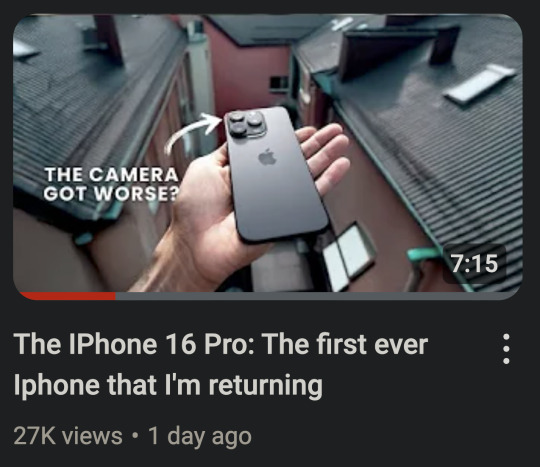

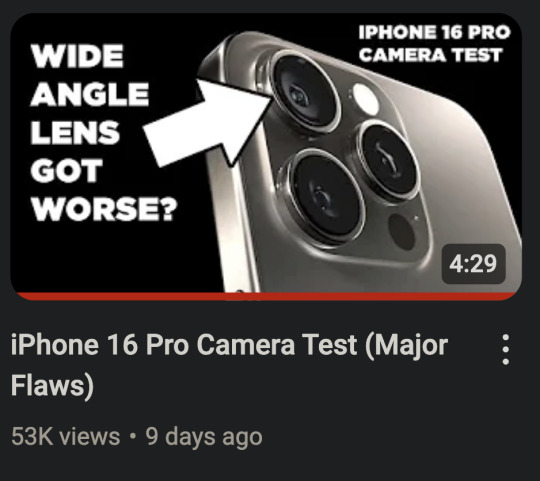
And I suppose this is partly Apple's fault. Their marketing and hype machine always goes overboard. But also, that's just how marketing works. Samsung has a "200 megapixel" sensor and Sony has a "Zeiss" lens. And I think it is unrealistic to expect smartphone companies to say "This product has entered the iterative phase and each new model will only be marginally improved over the last one."
Smartphones (from any brand) have become an appliance. You don't buy a new model of microwave every year. And you don't expect every new model of microwave to have new revolutionary technology. And that is pretty much the expectation you should have with most computer hardware from here on out.
And in some ways, that is a good thing. That means the design of the phone has pretty much been perfected and it will last you a long time if you take care of it. You will not be left behind and your phone will be able to handle any new software for most of its lifespan.
So, is Apple getting lazy or is there a reason their hardware is stagnating?
It seems that neither money nor marketing can change the laws of physics.
They cannot make transistors much smaller. Phones and computers are about as fast as current hardware designs can make them (unless there is a shocking scientific breakthrough). From here on out, heavy compute tasks that are beyond your phone or computer will be done in the cloud on giant computer clusters. Thankfully computers and phones seem to be plenty fast for the majority of tasks we ask of them.
I remember Katrina telling me her new computer didn't seem any faster. And I explained the computing tasks she does regularly were not really affected by the increased power and speed of her new computer. If something took 0.1 seconds before and now it takes 0.05 seconds, that is twice as fast. An increase in speed that looks fantastic in advertisements. But it is hard for our brains to perceive. She just didn't do anything on her computer that took it long enough for her to notice. But having a faster and more powerful computer/phone will increase its lifespan and resale value, so it is still prudent to get the best things you can afford at time of purchase.
And I'm afraid smartphone cameras are hitting their own hardware limitations. They can't make the sensors much larger to get better depth of field and low light performance. And cramming in more megapixels doesn't actually add much more detail, if any.
It's physics.
Again.
You cannot get any more performance out of a small plastic lens. Why do you think pro photographers haul around 10 pound lenses still?
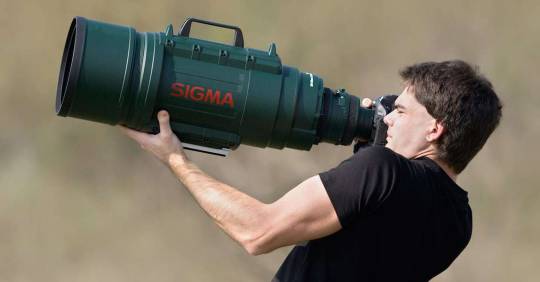
There is a formula for detail that never seems to be explained in any camera marketing.
Here is the simplified version...
Detail = Sensor x Lens
Let's say 1 is perfection. You have a sensor that performs at 0.5 and a lens that performs at 0.2.
The total detail will be 0.1.
But in the new model you increase the performance of the sensor to 0.8. WOW! That's so close to 1!
The total detail will be... 0.16.
Now let's imagine we've discovered a magic, physics-defying tiny plastic lens that performs at 0.8 as well.
The total detail jumps to 0.64!
But we all get sucked into a wormhole because we violated the laws of the universe.
Even if you were to design a near perfect (perfect is impossible) sensor that scores 0.99.
Without that magic plastic lens... 0.198
This is why I put Samsung's "200 megapixel" sensors in quotes. Because when paired with the same tiny plastic lens, there isn't much improvement. And that's why a 12 megapixel DSLR from 10 years ago with a giant honking lens can still capture more detail.
Most of the quality from smartphone cameras comes from the computational software processing. Phones actually take many photos at once and combine them to get you a decent image.

While that is still improving a little bit each generation, those improvements are stagnating as well. Until image processing can do a better job of inventing more detail realistically, smartphones are going to have to obey the laws of physics.
So... why are photographers saying the iPhone cameras are worse?
First, the ultra wide angle lens looks softer in low light.
And if you zoom between 1x and 5x, the images look less detailed.
But neither of those things make the cameras *worse*. In fact, the cameras are better for the most part. It's just that Apple decided to compromise on one aspect to improve another. Probably due to market research telling them most people prioritize certain things over others when taking photos.
They increased the resolution of the ultra wide angle sensor to match the detail of the main sensor, but that seems to have lowered the low light performance of the ultra wide. So in good light, you will see an improvement in sharpness. But they could not increase the sensor size to compensate and smaller pixels can have trouble with dim conditions. They probably discovered that people mostly use that lens in good light and they would appreciate the bump in detail more.
But pro photographers often photograph in more challenging lighting conditions because you can capture a more artistic shot. I don't think I could have gotten this shot on a smartphone.

But photo normies are just taking pics of their kids doing weird kid shit.
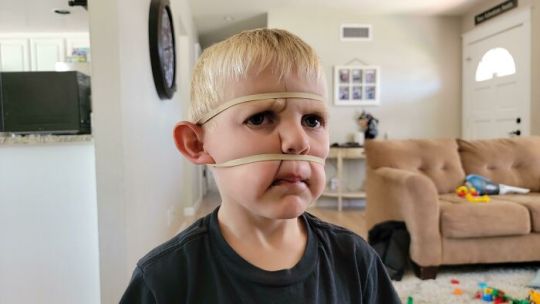
They aren't really trying to push the limits of their ultra wide angle lenses.
And they increased the zoom of the telephoto lens to 5x from 3x because most people never used the 3x. So images at 5x look great now, but unfortunately if you use anything between 1x and 5x, your image will be *digitally* zoomed. Which is never as good as optical zoom. They basically crop the photo, zoom in, and add sharpening.
So they prioritized people having longer reach and more zoom at the expense of that middle zoom range. Every camera system makes tradeoffs and compromises.
And I hate that I always feel like I am defending Apple, because they do have misleading and dishonest marketing regarding a lot of aspects of their tech. But hating on Apple gets more clicks so content creators also make misleading and dishonest claims.
And so we are just surrounded in a circle of hyperbole from all sides.
Now, if you know these limitations, you can change your approach to photographing stuff to keep them from being an issue. You can reap the benefits without dealing with the new compromises.
Here are some tips to help owners of the new iPhone, but also everyone else too.
Smartphone Photography Tips
Whenever possible, try to use the main 1x camera at only 1x zoom. This has the largest sensor with the most detail and works best in the lowest light. Only use the ultra wide or telephoto if you cannot get the photo otherwise. If you aren't sure you have enough light for ultra wide, take the photo, and then as a safety, take two photos with the main camera side by side and stitch them later with a pano app.
"Zoom with your feet" and don't use "in-between" zooms. Let's say your lenses do 0.5x, 1x, and 5x zoom. Even though you have the option to use other zooms, like 2x or 3x, that is going to compromise your picture quality. It is essentially going to crop your photo and enlarge it, which causes a loss of detail. If fact, if you use 4.5x instead of 5x, your picture will probably look like trash. You are always going to get better results if you can move closer or step back so that you are using the native focal length of your chosen lens. For example, let's say you are taking a photo and you judge the best framing to be at 4x. But you still have 10 feet of space behind you. If you back up and then zoom in to 5x, the phone will switch to that lens and you will get a much clearer picture.
Rule of thumb...
1 to 3x... try to move closer.
4 to 5x... try to move back.
If you hit a wall and end up at 4.5x, you might see if you have a panorama mode and try that instead. Switch to your 5x and do the pano. Or you can take two photos and then stitch them together with software later on. (Stitching panos with an app later will give better quality than pano mode, especially in low light.)
Low light needs stability. Get some sort of stabilizing device for low light photos. Either a phone case that lets you stand up the phone on its own or a mini tripod.
This thing folds to the size of a credit card.
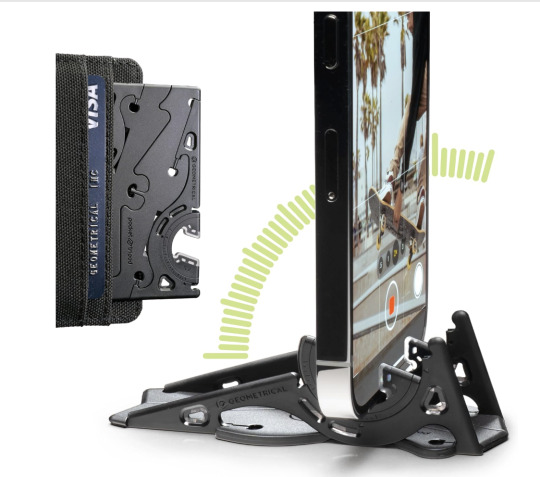
Your phone will detect when it is stable and not being handheld. It will then automatically extend its shutter speed allowing it to drink in more light and give you a better picture.
Tripods are photography magic and will improve your low light photos quite a bit. Motion blur of moving subjects can still be an issue, but photos of a cityscape or landscape will look great.
For selfies, shoot a little bit wide and then crop in. This goes a little contrary to my earlier advice saying cropping lowers detail, but this is specifically for shooting a face. The 0.5x and 1x lenses on smartphone cameras are fairly wide angle. This can cause unflattering proportions with human faces. Wide angle lenses exaggerate distance. Near things look very near and far things look very far. To a wide angle lens, the tip of your nose looks like it is super close but your ears seem like they are a mile away. And that's why you may look a bit "alien" in your selfies.
People's natural instinct is to "fill the frame" with a face. The outer edges of a wide angle lens are more distorted than the very center. So try to keep faces away from the edges of the frame.
And one other trick you can do for selfies and pictures of faces is step back a few feet. Sometimes this is hard, especially with selfies, as your arm is only so long... but if you can take your face photos from just a little bit farther back, you will almost entirely eliminate unflattering distortion. In some cases, just stretching out your arm as far as it will go is enough.
Then you just crop the image with the framing you originally wanted, and your facial proportions will look great.
An example...

Here the distortion is bad because I am not in the center and the lens is too close to my face. The lens thinks my nose is really close and my ears are in Canada.

But when the lens is farther back the edge distortion is less prevalent and my nose and ears (relative to the lens) seem roughly the same distance away. So my proportions look great, but I don't quite have the framing I want.
But with a little cropping...


For social media there is still plenty of resolution to crop in. Cropping isn't bad, it's just always better to use it as a last resort or in a special circumstance like this. I get roughly the same framing as in my wide angle shot, but I don't look like I'm behind a door's peephole trying to sell you the Good News.
I wish they made a "mini" selfie stick that only extended a foot or so. With the main camera that is usually all people need to undo any wide angle issues. I have one of those mini tripods and that works well, but there is no activation button so I have to do a timer. Mirrors work great to help you get some selfie distance.
In any case, all cameras have limitations and compromises. Clickbait titles saying something is WORSE THAN THE OLD ONE are frustrating and wrong.
And people upgrading phones every year are silly. All current name brand smartphones have promised at least 5 years of software updates. I think Google and Samsung are offering 7 years on some models. And Apple has always just let you use your phone until it literally will not work with new software. Which has worked out to 8 years in some cases (with a battery swap).
Phones are now appliances. For now, hardware will improve 10 to 15% from generation to generation until physics breaks. So if you want a 50% improvement, wait 5 years and you'll think your new phone is awesome. If you upgrade every year, it is going to be difficult to see the change.
I hope to be starting a little course on smartphone photography in the near future. All modern phones are capable of taking amazing pictures. And as long as you understand their limitations you can mitigate or avoid them. And that is what I plan to teach.
#photography#bound by physics is right#lens size and sensor size are inherently tied to real life physics and there is a hard limit on how small you can make them#even if you continued to miniaturize everything else#your sensors and lenses are capped and cannot physically get smaller without sacrificing image quality#anyway part of the art is to pull things off even with substandard (phone) cameras#commentary#i wouldn't do an iphone tho lol. joke phone. 😂#more people need to understand zoom on phone cameras. if you're pinching in to 'zoom' you're probably failing#most of those are digital zooms which are the equivalent of cropping and enlarging the original image#it's a fake zoom and frankly they shouldn't exist#the only zoom you want is an optical zoom. it's not a zoom if it's not optical
700 notes
·
View notes
Text
Distributed Fiber Optic Sensor Market is Growing Amid Rising VC Investments
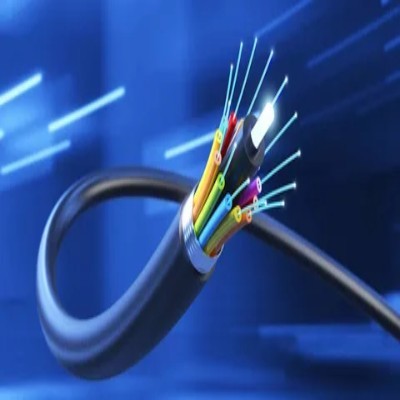
Strong venture capital infusions and strategic partnerships accelerated Distributed Fiber Optic Sensor deployments in 2025. Q1 funding surged by 22% across next-gen sensing platforms.
The Global Distributed Fiber Optic Sensor Market size is estimated at USD 1,546.9 Mn in 2025 and is expected to reach USD 2,738.2 Mn by 2032, exhibiting a CAGR of 8.5%. Our data shows that the Distributed Fiber Optic Sensor Market Insights will expand markedly in Asia Pacific due to major infrastructure funding. This market report outlines market size and market report details, combining proprietary market research and in-depth market analysis to project Distributed Fiber Optic Sensor Market revenue trajectories, industry size and emerging market share scenarios. Key market drivers include demand for continuous structural health monitoring and stringent regulatory standards, while market restraints such as deployment complexity shape market trends and market growth strategies. Get more insights on,Distributed Fiber Optic Sensor Market
#Coherent Market Insights#Distributed Fiber Optic Sensor#Distributed Fiber Optic Sensor Market#Distributed Fiber Optic Sensor Market Insights#Strain Sensing
0 notes
Text
KODAK PIXPRO FZ55-BK 16MP CMOS Sensor Digital Camera 5X Optical Zoom 28mm Wide Angle 1080P Full HD Video 2.7" LCD Vlogging Camera (Black)
Price: (as of – Details) KODAK PIXPRO FZ55 Friendly Zoom digital camera (Black), 5X Optical Zoom, 16MP CMOS Sensor, 28mm Wide Angle Lens, 1080p Full HD Video, 2.7″ LCD, Rechargeable Li-ion Battery (included) 16 Megapixel CMOS Sensor5X Optical Zoom – 28mm Wide Angle Lens1080P Full HD Video – Vlogging CameraSD Card Compatibility: At least Class 10, no more than 512GB (SD, SDHC, SDXC)2.7″ LCD…

View On WordPress
#1080p#16MP#28mm#amazon products#Angle#Black#camera#CMOS#Digital#Full#FZ55BK#KODAK#LCD#optical#outdoor-equipment#PIXPRO#sensor#Video#vlogging#Wide#zoom
0 notes
Text
Global Distributed Fiber Optic Sensor Market to Hit $1.98 Billion by 2032

Distributed Fiber Optic Sensor (DFOS) Market Analysis:
The global Distributed Fibre Optic Sensing (DFOS) Market size was valued at US$ 1.42 billion in 2024 and is projected to reach US$ 2.71 billion by 2032, at a CAGR of 9.6% during the forecast period 2025-2032
Distributed Fiber Optic Sensor (DFOS) Market Overview
Distributed sensing technology enables continuous, real-time measurements of the entire length of the fiber optic cable.Unlike traditional sensors, which rely on discrete sensors measured at predetermined points, distributed sensing does not rely on manufactured sensors but USES optical fibers. Distributed fiber optic sensor (DFOS) is an ideal choice for monitoring critical infrastructure or facilities.These sensors are small in size, low in cost, impervious to electromagnetic interference, and mechanically and chemically compatible with most building materials, making them ideal for building very large monitoring networks.Distributed optical fiber sensor (DFOS) is commonly used to measure parameters in real time and is difficult to obtain at high resolution over long distances.This limitation can be overcome by using distributed sensors. Distributed optical fiber sensing system usually consists of laser light source, sensing optical fiber (cable) and detection unit. It is an automatic monitoring system.The measurement is based on the principle of backscattering of light transmitted in the optical fiber.Into a certain energy in the optical fiber and the width of laser pulse, it while they are in the optical fiber transmission to the scattering light, after the creation of the state of light scattering in optical fiber damage and the influence of the change, will not be back scattering of light after WDM, detection, demodulation, into the signal is real-time signal processing system can be displayed, and consists of light waves in optical fiber transmission speed and back light echo time for these information.The distributed optical fiber sensing (DFOS) counted in this report only includes the host system, not the sensing optical fiber (cable) and display equipment.
Distributed Fiber Optic Sensors (DFOS) are advanced sensing systems that utilize fiber optic cables to detect changes in temperature, strain, acoustics, and other environmental variables along the entire length of the fiber. These sensors are widely used in industries like oil & gas, civil engineering, power, and security monitoring due to their high sensitivity, real-time monitoring capabilities, and durability in harsh environments.
Key Players in the Global DFOS Market
The global DFOS market is moderately concentrated, with the top players holding significant shares. Leading companies include:
Schlumberger
Halliburton
Baker Hughes
These top three players together account for over 30% of the global market share, showcasing strong technological leadership and industry experience.
Regional Production Insights
North America: Dominates the market with over 40% share, attributed to a strong presence in the oil & gas industry and advanced technological infrastructure.
China: Holds approximately 30% of the global production, driven by rapid industrialization and infrastructure development.
Europe: Accounts for about 15% of global output, supported by growth in energy and construction sectors.
Market Segmentation by Type
DTS (Distributed Temperature Sensing): Holds the largest market share at approximately 55%, driven by its wide adoption in temperature-critical applications such as downhole monitoring and pipeline leak detection.
Other types include DAS (Distributed Acoustic Sensing) and DSS (Distributed Strain Sensing).
Market Segmentation by Application
Petroleum and Petrochemical: Dominates the application segment with a market share of over 45%, owing to its crucial role in wellbore monitoring, reservoir characterization, and pipeline management.
Other application areas:
Power & utility
Civil engineering (bridges, tunnels)
Safety and security (perimeter and intrusion detection)
Transportation infrastructure
We have surveyed the Distributed Fiber Optic Sensor (DFOS) manufacturers, suppliers, distributors, and industry experts on this industry, involving the sales, revenue, demand, price change, product type, recent development and plan, industry trends, drivers, challenges, obstacles, and potential risks This report aims to provide a comprehensive presentation of the global market for Distributed Fiber Optic Sensor (DFOS), with both quantitative and qualitative analysis, to help readers develop business/growth strategies, assess the market competitive situation, analyze their position in the current marketplace, and make informed business decisions regarding Distributed Fiber Optic Sensor (DFOS). This report contains market size and forecasts of Distributed Fiber Optic Sensor (DFOS) in global, including the following market information:
Global Distributed Fiber Optic Sensor (DFOS) market revenue, 2020-2025, 2026-2031, ($ millions)
Global Distributed Fiber Optic Sensor (DFOS) market sales, 2020-2025, 2026-2031, (Units)
Global top five Distributed Fiber Optic Sensor (DFOS) companies in 2024 (%)
Distributed Fiber Optic Sensor (DFOS) Key Market Trends :
Growing Adoption in Oil & Gas Industry DFOS is increasingly used in petroleum and petrochemical sectors for real-time well monitoring and pipeline inspection due to its reliability and long-distance sensing capabilities.
Shift Towards Smart Infrastructure Monitoring The rise in smart city projects and infrastructure upgrades has boosted the demand for DFOS for monitoring bridges, tunnels, and buildings.
Integration with AI and Data Analytics DFOS systems are being enhanced with AI algorithms for predictive maintenance and improved data interpretation in complex environments.
Technological Advancements in DTS and DAS Innovations in Distributed Temperature Sensing (DTS) and Distributed Acoustic Sensing (DAS) are driving efficiency and expanding DFOS applications.
Expansion in Public Safety and Security There’s increasing use of DFOS for perimeter and intrusion detection in high-security areas like airports, government buildings, and industrial zones.
Distributed Fiber Optic Sensor (DFOS) Market Regional Analysis :
https://semiconductorinsight.com/wp-content/uploads/2025/01/download-34_11zon-1.png
North America:Strong demand driven by EVs, 5G infrastructure, and renewable energy, with the U.S. leading the market.
Europe:Growth fueled by automotive electrification, renewable energy, and strong regulatory support, with Germany as a key player.
Asia-Pacific:Dominates the market due to large-scale manufacturing in China and Japan, with growing demand from EVs, 5G, and semiconductors.
South America:Emerging market, driven by renewable energy and EV adoption, with Brazil leading growth.
Middle East & Africa:Gradual growth, mainly due to investments in renewable energy and EV infrastructure, with Saudi Arabia and UAE as key contributors.
Total Market by Segment:
Global Distributed Fiber Optic Sensor (DFOS) market, by Type, 2020-2025, 2026-2031 ($ millions) & (Units) Global Distributed Fiber Optic Sensor (DFOS) market segment percentages, by Type, 2024 (%)
DTS
DAS
Others (DSS, etc.)
Global Distributed Fiber Optic Sensor (DFOS) market, by Application, 2020-2025, 2026-2031 ($ Millions) & (Units) Global Distributed Fiber Optic Sensor (DFOS) market segment percentages, by Application, 2024 (%)
Petroleum and Petrochemical
Electricity
Traffic Tunnel Bridge
Metallurgy
Security Monitoring
Fire and Public Safety
Colleges and Scientific Research Institutions
Others
Competitor Analysis The report also provides analysis of leading market participants including:
Key companies Distributed Fiber Optic Sensor (DFOS) revenues in global market, 2020-2025 (estimated), ($ millions)
Key companies Distributed Fiber Optic Sensor (DFOS) revenues share in global market, 2024 (%)
Key companies Distributed Fiber Optic Sensor (DFOS) sales in global market, 2020-2025 (estimated), (Units)
Key companies Distributed Fiber Optic Sensor (DFOS) sales share in global market, 2024 (%)
Further, the report presents profiles of competitors in the market, key players include:
Schlumberger
Halliburton
Baker Hughes
Fotech Solutions
Silixa
OptaSense (QinetiQ)
AP Sensing
OZ Optics
LIOS (NKT Photonics)
Omnisens
Hifi Engineering
Future Fibre Technologies (Ava Group)
Bandweaver
Shanghai Huawei Technology
AGIOE
Hunan Guangsheng Optical Fiber Sensing Company
Wuhan Ligong Guangke Company Limited
CNPC Aobo (Chengdu) Technology
Guoxing Huijin (Shenzhen) Technology
Zhuhai Xunwei Oil and Gas Well Information Technology
Anton Oilfield Services (Group) Ltd
Chengdu Well Plus Oilfield Service
Beijing Perception Technology
Xiamen Fengxing Optoelec-tek
Jiangsu Huaneng Cable
Jiangsu Zhongtian Technology
Jiangsu Hengtong Power Cable
Market Drivers
Increasing Demand for Real-Time Monitoring The ability of DFOS to provide continuous, real-time data across long distances makes it ideal for critical applications such as oil wells, tunnels, and electrical grids.
Rising Investment in Smart Infrastructure Governments and private sectors are investing heavily in infrastructure development, boosting the adoption of DFOS for structural health monitoring.
Superior Performance in Harsh Environments DFOS is resistant to electromagnetic interference and extreme environmental conditions, making it a preferred choice over traditional sensors.
Market Restraints
High Initial Setup Cost The deployment of DFOS systems requires significant capital investment in laser sources, detection units, and integration, limiting its adoption for small-scale use.
Complex Installation and Calibration Installing and calibrating DFOS systems can be technically challenging, often requiring specialized personnel and tools.
Limited Awareness in Emerging Markets In several developing regions, the awareness and understanding of DFOS technology are still limited, slowing down market growth.
Market Opportunities
Expansion in Renewable Energy Sector DFOS can play a crucial role in monitoring wind turbines, solar farms, and other renewable infrastructure, opening new market opportunities.
Advancements in Fiber Optic Technology Continued R&D in fiber optics and sensing technology is likely to enhance DFOS capabilities, making it more efficient and cost-effective.
Increased Focus on Industrial Safety With growing concerns about workplace safety, industries are turning to DFOS systems for real-time hazard detection and accident prevention.
Market Challenges
Data Management and Interpretation Handling and analyzing the vast amount of data generated by DFOS systems remains a technical hurdle, especially in complex environments.
Integration with Existing Systems Integrating DFOS with legacy systems and infrastructure can be difficult, requiring additional time and investment.
#Global Distributed Fiber Optic Sensor Market#Global Distributed Fiber Optic Sensor Market Share#Global Distributed Fiber Optic Sensor Market Size
0 notes
Text
[ Motors Winding Down ]

STAR WARS EPISODE I: The Phantom Menace 02:03:35
#Star Wars#Episode I#The Phantom Menace#Naboo#Great Grass Plains#Battle of Naboo#Battle of the Great Grass Plains#Jar Jar Binks#unidentified battle droid#B1 infantry battle droid#Gallo Mountains#optical sensor#vocoder#power cell#waste energy conduit#haillu#E-5 blaster rifle#signal boost and power augmentation backpack#arm extension piston#specialized movement processor#sample movement cycle memory#transmitter boost antenna#signal reception boost antenna#Captain Roos Tarpals
1 note
·
View note
Text

Twisted crystals open door to smaller, more powerful sensors for optical devices
Twisted moiré photonic crystals—an advanced type of optical metamaterial—have shown enormous potential in the race to engineer smaller, more capable and more powerful optical systems. How do they work? Imagine you have two pieces of fabric with regular patterns, like stripes or checkers. When you lay the two pieces of fabric directly on top of each other, you can see each pattern clearly. But if you slightly shift one piece of fabric or twist it, new patterns that weren't in either of the original fabrics emerge. In twisted moiré photonic crystals, how the layers twist and overlap can change how the material interacts with light. By changing the twist angle and the spacing between layers, these materials can be fine-tuned to control and manipulate different aspects of light simultaneously—meaning the multiple optical components typically needed to simultaneously measure light's phase, polarization, and wavelength could be replaced with one device.
Read more.
#Materials Science#Science#Twistronics#Crystals#Metamaterials#Photonics#Optics#Sensors#Harvard University
9 notes
·
View notes
Text
0 notes
Text
0 notes
Text
Reliable Digital & Industrial pH Sensors with Integrated pH Monitoring System
Our advanced pH monitoring system combines precision, durability, and real-time data tracking to meet the needs of modern industrial operations. Featuring both digital pH sensors and industrial pH sensors, this system delivers accurate pH measurements across a wide range of applications including water treatment, chemical manufacturing, pharmaceuticals, and food processing.
The digital pH sensor offers high-resolution measurement and fast response times, with minimal drift for long-term stability. It integrates seamlessly with automated control systems, allowing for continuous pH monitoring and instant alerts in case of deviations. The industrial pH sensor is built to withstand harsh environments, including high temperatures, corrosive chemicals, and high-pressure conditions, making it ideal for demanding field use.

Our complete pH monitoring system provides real-time data visualization, logging, and remote access, helping operators maintain optimal pH levels and improve overall process efficiency. With plug-and-play compatibility and minimal maintenance requirements, it’s a cost-effective solution that enhances quality control and regulatory compliance.
Whether you need precise pH control for a small operation or a complex industrial setup, our digital and industrial pH sensors deliver reliable performance and peace of mind. Upgrade your facility with a trusted pH monitoring system designed for accuracy, durability, and ease of use. WizSensor digital & industrial pH sensor with real-time pH monitoring system for all industries.
#Ammonium sensor#Ammonia nitrogen sensor#Oil in water sensor#Multi-parameter probe#turbidity sensor#Digital pH sensor#Water conductivity meter#chorophyll sensor#optical dissolved oxygen sensor
0 notes